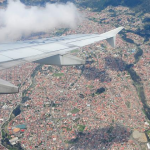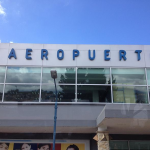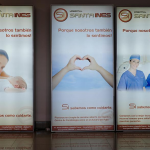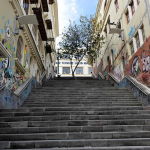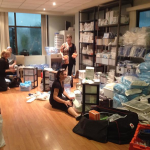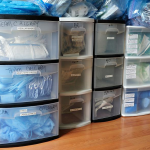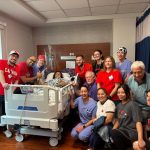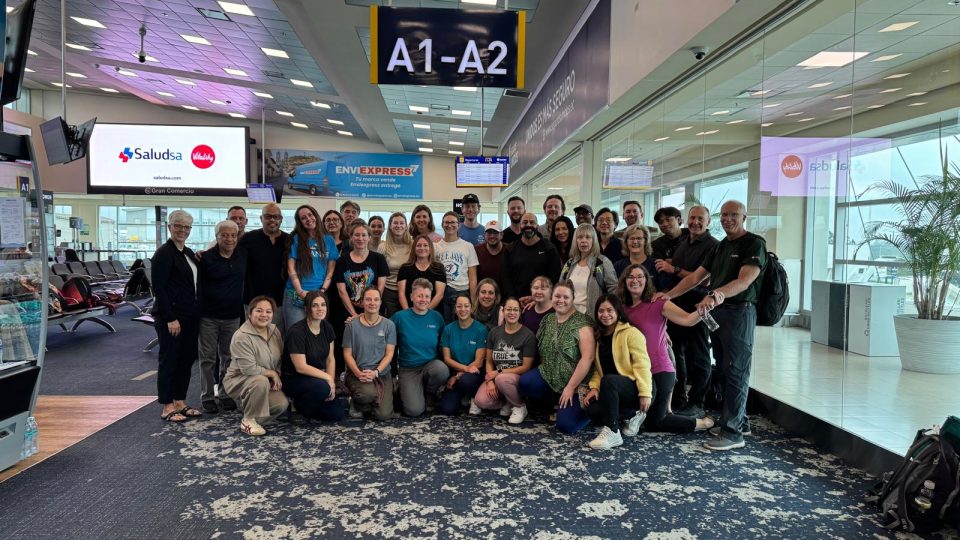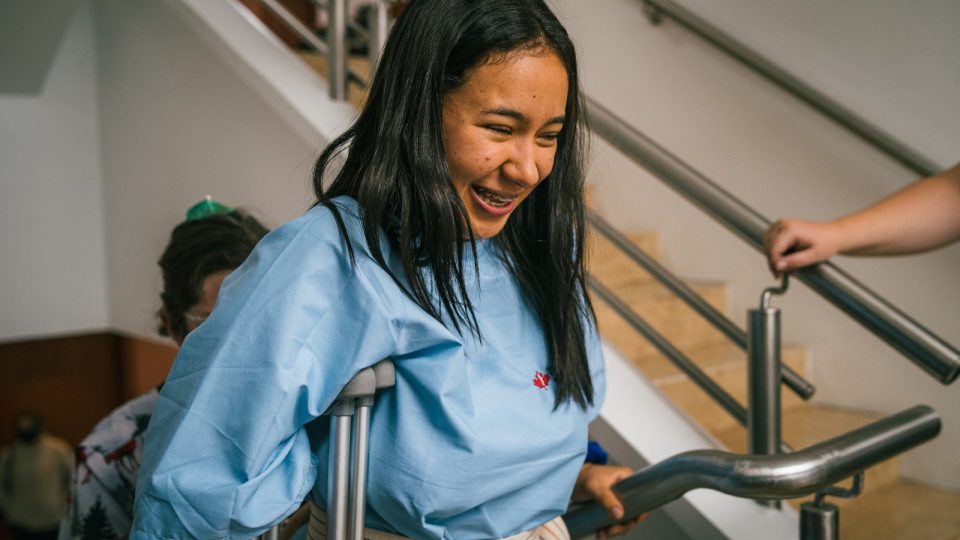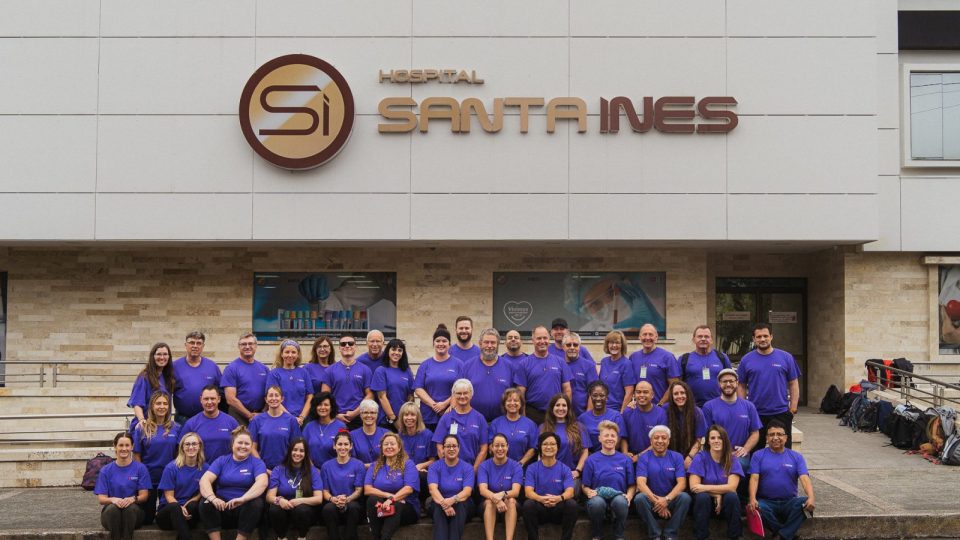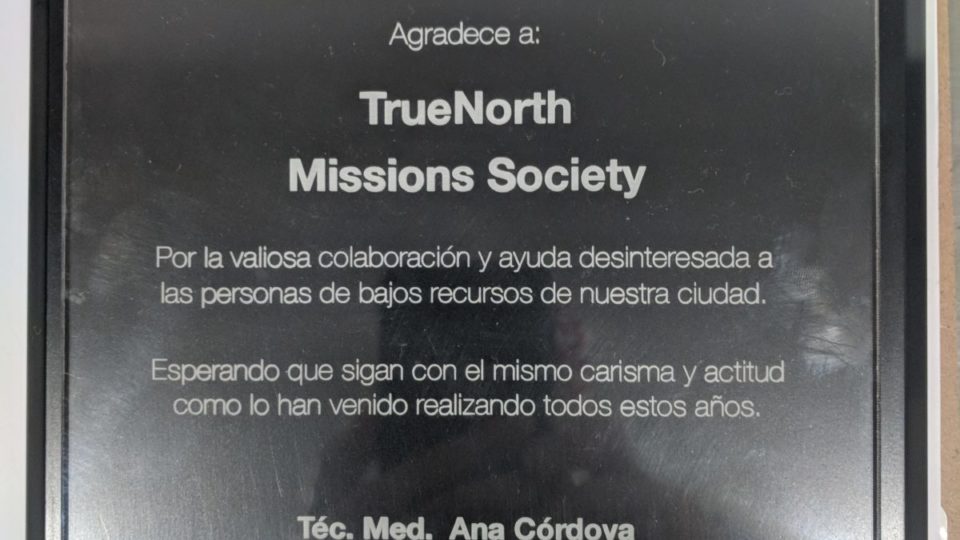On Sunday afternoon, May 11, the medical team and all equipment and supplies arrive at Santa Ines Hospital in Cuenca and each part of the group is on task. OR nurses are setting up a small area (the CORE) with all the necessary equipment and supplies that will be needed over the week. The carefully labelled and numbered hockey bags and totes are opened, shelves assembled and stocked. All the surgical instruments need to be sorted, washed by hand and sterilized to be ready for morning surgery. The instrument washer at the hospital is not large enough for the volume of equipment we have toted for these surgeries, so, by hand it is washed. Our professional processors sort them into trays, wrap and sterilize. This is not an easy or quick task as the sets are disturbed from transit and there are many to organize. The majority of the instruments are donated by Smith and Nephew and dedicated to the mission only. They are stored for the time between missions.
Most importantly, and during the set up described above, today is the day that numerous potential patients flock to the hospital for consideration as surgical candidates. In many cases, these individuals have been in pain due to a hip condition plaguing them for a number of years. Their famiies have made the trip with them and they are hopeful for a procedure which will offer pain relief, mobility and the return of a functional life. First, Dr. Manuel Avila screens the candidates to determine who may be helped by our surgical procedures; surgeries not otherwise available to these people in current day Cuenca, Ecuador. They are scheduled into today’s pre-op clinic by our charity volunteers/translators. Patients wait with family members until escorted in to be assessed by an anesthetist, surgeon, and physiotherapist. Their x-rays and medical history are reviewed and a physical exam is done to determine if they can be helped. Of the many screened, some must be turned away. While one patient is given the good news of a surgery date, another unfortunately must bear the dissappointment that their condition is inoperable or they are not a good candidate at this time.
One young woman, age 35, is attending with her husband. She must walk slowly into the clinic with the aid of a cane. She is a teacher. This woman has suffered with pain for at least 10 years and must use pain meds to get through the day. When asked how far she can walk, she answers in Spanish that she can walk one block. Her x-rays reveal an all too common condition in this area of the world. It is referred to as acetabular dysplaysia. The condition is characterized by a shallow socket of the hip that does not cover the femoral head. This causes the hip to be unstable, very painful and susceptible to osteoarthritis. Note the x-ray photos in this year’s mission photo slideshow on the Home page that clearly show the femoral head is migrating out of the socket. In one x-ray, from a different patient, the condition is more progressed. The more the femoral head has moved, of course, the more involved the surgery is to correct it and Dr. Powell’s team is specialized in this regard.
One of our medical professionals, a charity volunteer, noted today that this is sad day for him as he observes that a full 50% of the 30 x-rays he had viewed so far, were clear cases of congenital dysplaysia. Such a high percentage! Later, it is noted by Dr. Powell, after all assessments, that the occurrence of dysplaysia was as high as 90%..
In addition to the excitement at Santa Ines, approximately 6 of our members visited the local military hospital only a few blocks away to scout out the available facilities. Dr. Avila had arranged for facilities at the military hospital when he learned that True North Missions Society was fortunate enough to have Dr. Wally Temple, a renowned oncology surgeon and Dr. Peter Huang, a very accomplished and experienced opthalmalogist, join us on this year’s mission. This is how our team grew from 22 people in 2013 to 38 in 2014!
The military hospital is in a 2nd World War building and is set up as a public access hospital. There are limited resources. Dr. Avila informs us that an operating room has been made available for the charity’s surgeons. They will be given the space to assess, diagnose and treat patients who would not otherwise have access to abdominal (such as hernia’s and gall bladder issues) health care and cataract surgery. These patients will not be charged by us for their care, however, it is possible the hospital may charge an administration fee. We have brought everything possible in transit in order to minimize our impact on their resources and facility (even toilet paper is a very valuable resource in this part of the world.)
On the initial patient clinic day, three operable hernias are identified and eight cataract surgeries are planned for Monday am. The plan is to have an OR scheduled part time for each of cataract and general surgery. Of course, the charity is sensitive and respectful of the local medical community and we are quite cognitive of the fact that we are in their country, their space and using their hospitals in our quest to help. This situation can be delicate and with open and respectful communications via our contact, Dr. Manuel Avila, we come to realize they are kind, welcoming, and appreciative. This is also evident at the ward level as we receive a warm reception from hospital staff. There are smiles, handshakes, hugs, introductions, and offers of assistance. Although the language barrier is a definite challenge and our interpretors are run off their feet, it is still amazing the amount of communication that can happen when “no hablo espanol”.
The charity’s more seasoned team members are thrilled at the prospect of expanding the mission this year to include a wider variety of conditions to treat. It is rewarding to meet the needs of those who do not otherwise have access to this type of health care. While visiting the pre-op clinic, one nurse smiled as she told me that the next day, Dr. Wally Temple, our general surgeon, was booked to correct a hernia in a small child. Later, a few of us marvelled at the immense impact that Dr. Peter Huang’s cataract surgery will have on those individuals now in the queue to receive the gift of much improved sight.
This group of medical professionals and all those that support the charity in various ways (including the families of the team members…who also give of themselves behind the scenes), with the gifts of time, talent and treasure, will have a life changing impact on these patients and their families.
All in all…a long but GOOD Day!

